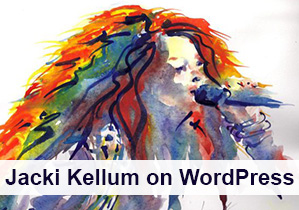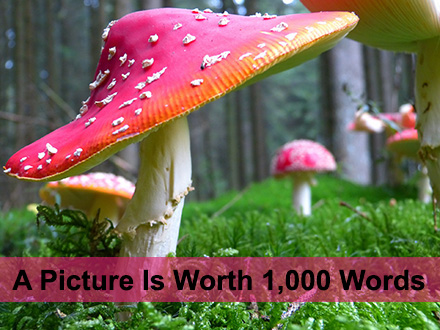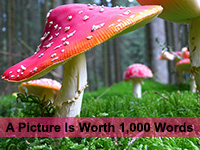
Compare the Following Text about Sally Field’s Role in Places in the Heart both With Images and Without

Many years ago, I watched the movie Places in the Heart. The setting is in a cotton-farming part of Texas, just after the Depression, in 1930. I grew up in the cotton-farming region of Southeast Missouri–about 20 years after the setting of Places in the Heart; but when I first watched the movie, I recognized my family and my childhood home, as it must have been when my parents were kids–and as it still was, in some ways, when I was a child.

By the time that I was a child, some things in the Bootheel had become more modern; but the stamp of the Depression era was indelibly etched upon my town. When I was a child, I was not forced to desperately try to save my home as Edna Spalding [Sally Field] did, but I did pick cotton during the fall. In fact, the kids my age were the last of the generations of children who were dismissed for cotton “vacation,” when we would pick cotton.

From first-hand experience, I know how it feels to have your hands splintered by the dried cotton hulls, and I know how the splinters swell and ache. I know the sting of cotton’s caterpillars, and I know how, after hours of stooping over to pick cotton, your back begins to groan. I also know how it feels to lift a heavy sack of cotton to your shoulders and carry it to the wagon to be weighed.

Because I know Edna Spalding, I know that Sally Field was beyond superb in the portrayal of her.

I am a visual person and because I like music, I prefer many of the cinematic versions of most books–as compared to the books themselves. People argue with me about that, and I simply say, “To each, his own.” But when a movie becomes life itself, and I can step into any scene and take part, I feel that the movie has succeeded.
Although Sally Field did receive an Academy Award for her performance in this movie, the movie is only rated now as 3.5 out of 5 stars. That shocks me. To me, the movie is a solid 5 stars, but I believe that many do not love the movie as I do, simply because they have not lived it. Unlike for me, Places in the Heart is not part of many people’s memories, and such is the ever-moving, ever-changing wheel of history.

I have often said that each of us has the capacity to directly touch life, as we lived it during our own generation and to vaguely reach backward through the tales of our grandparents. After that, we have little real understanding of the history before that time.

I am almost 66-years-old, and my span of history far exceeds that of most people living today. Plus, I lived in a remote, rural cotton-growing community in Southeast Missouri. Because of that, my experience is also unique to that of most people today. Yet, picking cotton just outside of a tiny, dusty town is part of my direct memory, and I am absolutely in awe of the way that Sally Field brought that almost gone period of myself back to life again.
—————————————
In looking at the above, illustrated text, you will note that it is more attractive to the reader than the following with no text. The images also serve as resting places for the reader. Places where the reader can conveniently stop, reflect, and then jump right back into the reading.
Images are essential to grab the interest of the readers that might dart past you blog site without images–if they come at all. Thereby, images drive readers to your posting and they also drive the readers through your posting.
Now Without Images
Many years ago, I watched the movie Places in the Heart. The setting is in a cotton-farming part of Texas, just after the Depression, in 1930. I grew up in the cotton-farming region of Southeast Missouri–about 20 years after the setting of Places in the Heart; but when I first watched the movie, I recognized my family and my childhood home, as it must have been when my parents were kids–and as it still was, in some ways, when I was a child.
By the time that I was a child, some things in the Bootheel had become more modern; but the stamp of the Depression era was indelibly etched upon my town. When I was a child, I was not forced to desperately try to save my home as Edna Spalding [Sally Field] did, but I did pick cotton during the fall. In fact, the kids my age were the last of the generations of children who were dismissed for cotton “vacation,” when we would pick cotton.
From first-hand experience, I know how it feels to have your hands splintered by the dried cotton hulls, and I know how the splinters swell and ache. I know the sting of cotton’s caterpillars, and I know how, after hours of stooping over to pick cotton, your back begins to groan. I also know how it feels to lift a heavy sack of cotton to your shoulders and carry it to the wagon to be weighed.
Because I know Edna Spalding, I know that Sally Field was beyond superb in the portrayal of her.
I am a visual person and because I like music, I prefer many of the cinematic versions of most books–as compared to the books themselves. People argue with me about that, and I simply say, “To each, his own.” But when a movie becomes life itself, and I can step into any scene and take part, I feel that the movie has succeeded.
Although Sally Field did receive an Academy Award for her performance in this movie, the movie is only rated now as 3.5 out of 5 stars. That shocks me. To me, the movie is a solid 5 stars, but I believe that many do not love the movie as I do, simply because they have not lived it. Unlike for me, Places in the Heart is not part of many people’s memories, and such is the ever-moving, ever-changing wheel of history.
I have often said that each of us has the capacity to directly touch life, as we lived it during our own generation and to vaguely reach backward through the tales of our grandparents. After that, we have little real understanding of the history before that time.
I am almost 66-years-old, and my span of history far exceeds that of most people living today. Plus, I lived in a remote, rural cotton-growing community in Southeast Missouri. Because of that, my experience is also unique to that of most people today. Yet, picking cotton just outside of a tiny, dusty town is part of my direct memory, and I am absolutely in awe of the way that Sally Field brought that almost gone period of myself back to life again.
[YAWN – Without Images]
I posted a similar snippet of memoir both with and without images Here.





























 A Facebook Profile Image should be 180 pixels x 180 pixels .
A Facebook Profile Image should be 180 pixels x 180 pixels .




 Widget Images can be hyperlinked.
Widget Images can be hyperlinked.
 300 pixels wide
300 pixels wide 225 pixels wide
225 pixels wide

 12-Month WordPress Pro
12-Month WordPress Pro